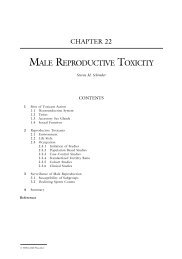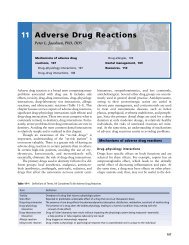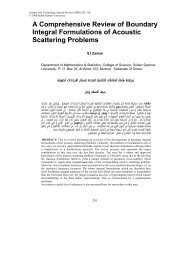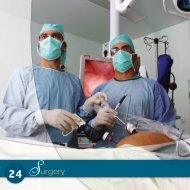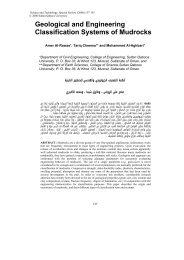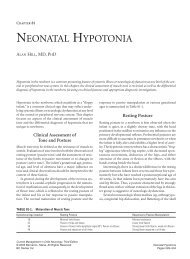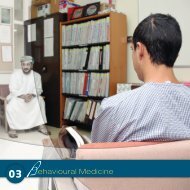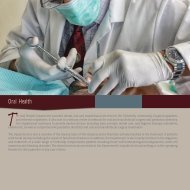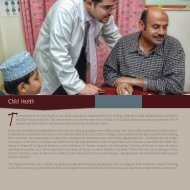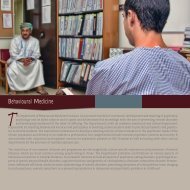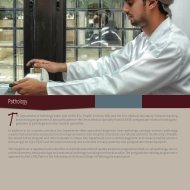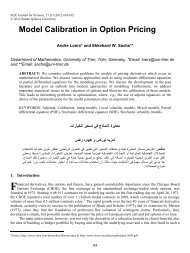Ch05: Red and White Lesions of the Oral Mucosa
Ch05: Red and White Lesions of the Oral Mucosa
Ch05: Red and White Lesions of the Oral Mucosa
You also want an ePaper? Increase the reach of your titles
YUMPU automatically turns print PDFs into web optimized ePapers that Google loves.
<strong>Red</strong> <strong>and</strong> <strong>White</strong> <strong>Lesions</strong> <strong>of</strong> <strong>the</strong> <strong>Oral</strong> <strong>Mucosa</strong> 99<br />
A<br />
B<br />
FIGURE 5-21 A, C<strong>and</strong>idal leukoplakia, a chronic form <strong>of</strong> c<strong>and</strong>idiasis<br />
in which firm red white plaques form, most <strong>of</strong>ten in <strong>the</strong> cheeks. B,<br />
Occasionally, <strong>the</strong> plaques develop in <strong>the</strong> palate opposite a tongue lesion<br />
(kissing lesions). (Courtesy <strong>of</strong> Dr. Robert Howell, West Virginia University,<br />
School <strong>of</strong> Dentistry)<br />
sum <strong>of</strong> <strong>the</strong> tongue <strong>and</strong> midline <strong>of</strong> <strong>the</strong> hard palate (kissing<br />
lesions), commissure area (angular cheilitis), <strong>and</strong> denturebearing<br />
mucosal surfaces (Figure 5-23). Smoking may also<br />
play an important role in immunocompetent patients.<br />
CHRONIC MUCOCUTANEOUS CANDIDIASIS<br />
Persistent infection with C<strong>and</strong>ida usually occurs as a result <strong>of</strong><br />
a defect in cell-mediated immunity or may be associated with<br />
iron deficiency. Hyperplastic mucocutaneous lesions, localized<br />
granulomas, <strong>and</strong> adherent white plaques on affected mucous<br />
membranes are <strong>the</strong> prominent lesions that identify chronic<br />
mucocutaneous c<strong>and</strong>idiasis (CMC) (Figure 5-24). In many<br />
cases, persistent <strong>and</strong> significant predisposing factors can be<br />
identified. Two categories <strong>of</strong> CMC have been described: (1)<br />
syndrome-associated CMC <strong>and</strong> (2) localized <strong>and</strong> diffuse CMC.<br />
Syndrome-associated CMC is fur<strong>the</strong>r categorized as ei<strong>the</strong>r<br />
familial or chronic. The familial form, c<strong>and</strong>idiasis endocrinopathy<br />
syndrome (CES), is a rare autosomal recessive disorder<br />
characterized by an onset <strong>of</strong> CMC during infancy or early childhood,<br />
associated with <strong>the</strong> appearance <strong>of</strong> hypoparathyroidism,<br />
hypoadrenocorticism, <strong>and</strong> o<strong>the</strong>r endocrine anomalies. 122<br />
Patients develop persistent oral c<strong>and</strong>idiasis <strong>and</strong> hyperplastic<br />
infections <strong>of</strong> <strong>the</strong> nail folds at an early age. Some patients also<br />
have low serum iron <strong>and</strong> iron-binding capacity. The o<strong>the</strong>r syndrome-associated<br />
form is chronic c<strong>and</strong>idiasis associated with<br />
thymoma, which appears with o<strong>the</strong>r autoimmune abnormalities<br />
such as myas<strong>the</strong>nia gravis, polymyositis, bullous lichen<br />
planus, 123 <strong>and</strong> hypogammaglobulinemia.<br />
Localized CMC is a variant associated with chronic oral<br />
c<strong>and</strong>idiasis <strong>and</strong> lesions <strong>of</strong> <strong>the</strong> skin <strong>and</strong> nails. <strong>Lesions</strong> usually<br />
begin within <strong>the</strong> first two decades <strong>of</strong> life. The diffuse variant<br />
is characterized by r<strong>and</strong>omly occurring cases <strong>of</strong> severe mucocutaneous<br />
c<strong>and</strong>idiasis with widespread skin involvement <strong>and</strong><br />
development <strong>of</strong> C<strong>and</strong>ida granulomas. It is <strong>of</strong>ten associated<br />
with o<strong>the</strong>r opportunistic fungal <strong>and</strong> bacterial infections. A<br />
majority <strong>of</strong> patients are iron deficient.<br />
Both oral <strong>and</strong> cutaneous lesions <strong>of</strong> CMC can be controlled<br />
by <strong>the</strong> continuous use <strong>of</strong> systemic antifungal drugs; once treatment<br />
is discontinued, however, <strong>the</strong> lesions rapidly reappear.<br />
IMMUNOCOMPROMISED (HIV)-ASSOCIATED CANDIDIASIS<br />
<strong>Oral</strong> c<strong>and</strong>idiasis is <strong>the</strong> most frequent opportunistic infection<br />
associated with immunocompromised individuals. 124 The role<br />
<strong>of</strong> weakened specific immune defense mechanisms is apparent<br />
from <strong>the</strong> fact that patients who are on immunosuppressive<br />
drug regimens 125 or who have HIV infection, 126 cancer, or<br />
hematologic malignancies have an increased susceptibility to<br />
oral c<strong>and</strong>idiasis. This supports an important role for T lymphocytes<br />
in immunity to C<strong>and</strong>ida, especially in regard to<br />
chronic c<strong>and</strong>idiasis. Host factors affecting <strong>the</strong> adherence <strong>of</strong><br />
C<strong>and</strong>ida to mucosal cells (such as salivary ABO antigens), 127<br />
as well as variation in <strong>the</strong> virulence <strong>and</strong> invasiveness <strong>of</strong> <strong>the</strong> fungal<br />
organism, also play a role.<br />
The possible importance <strong>of</strong> local immunoglobulin A (IgA)<br />
as a first line <strong>of</strong> protection against acute c<strong>and</strong>idiasis has been<br />
emphasized. 124–129 Salivary IgA (but not immunoglobulin G<br />
[IgG]) affects <strong>the</strong> adherence <strong>of</strong> C<strong>and</strong>ida to buccal epi<strong>the</strong>lial<br />
cells, 130 <strong>and</strong> levels <strong>of</strong> C<strong>and</strong>ida-specific IgA are elevated in <strong>the</strong><br />
saliva <strong>of</strong> healthy patients with chronic oral c<strong>and</strong>idiasis. In<br />
HIV-infected patients who develop oral c<strong>and</strong>idiasis, <strong>the</strong> level<br />
<strong>of</strong> salivary anti-C<strong>and</strong>ida IgG is increased while serum <strong>and</strong><br />
FIGURE 5-22 Chronic hyperplastic c<strong>and</strong>idiasis occurs on <strong>the</strong> dorsum<br />
<strong>of</strong> <strong>the</strong> tongue as a mammilated form <strong>of</strong> median rhomboid glossitis.





